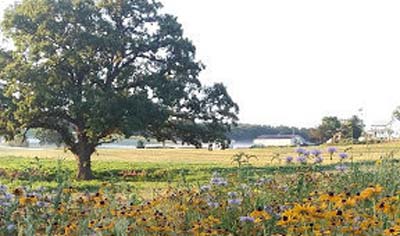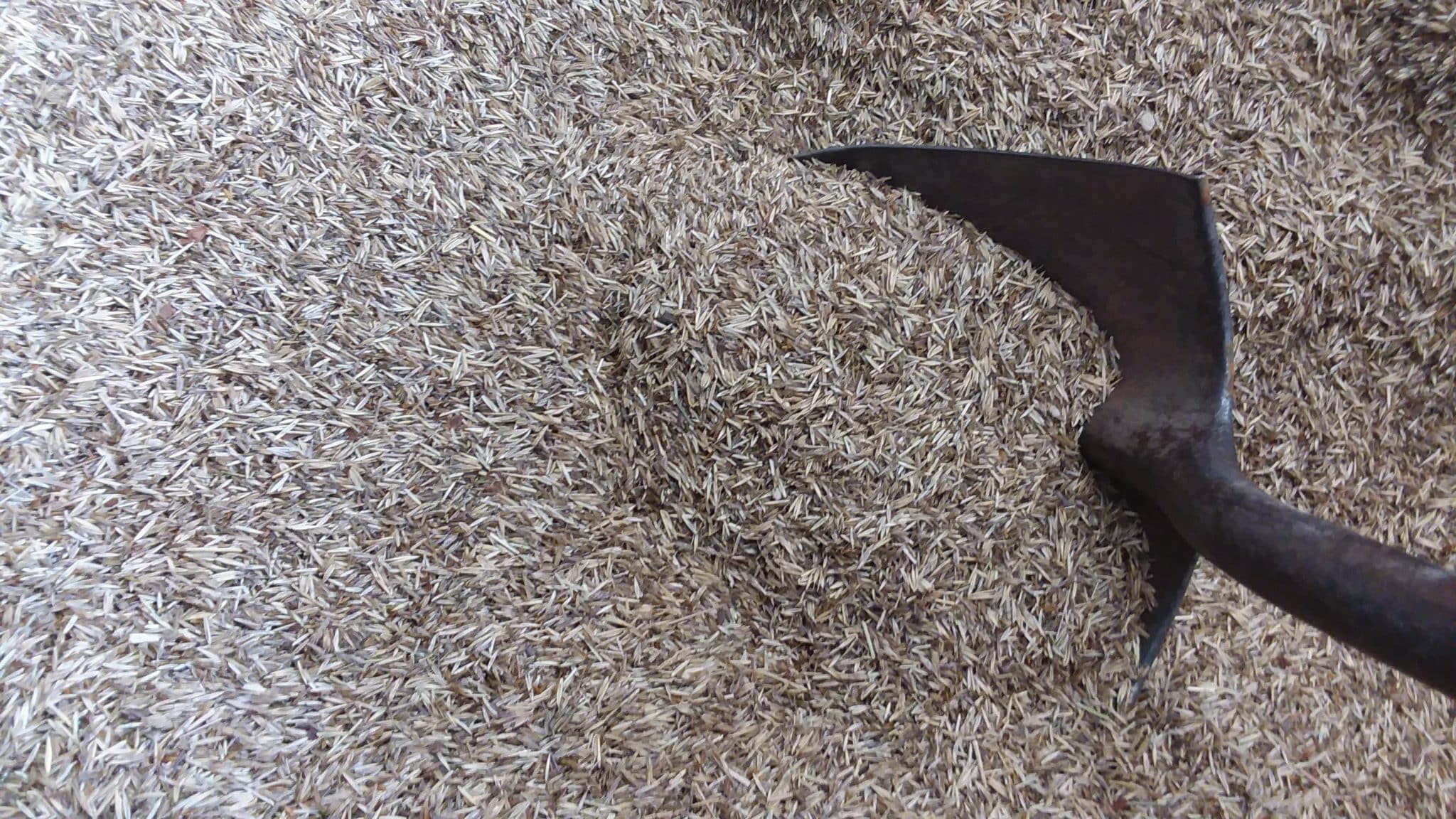
September 24, 2019
Agriculture and conservation are often seen as two sides of the same coin of land and resource management. They seem to end up on opposite sides of the debate table when it comes to soil, water, land use, and wildlife. Here at Gwenyn Hill Farm we see the choice between production agriculture and resource conservation as a false dichotomy. It is our vision to marry the two successfully and sustainably. To explore this further, I sat down with the person who takes the lead on how we carry this out: Ryan Heinen, our Land and Livestock Manager.
LH: You have a degree in Ecology and Wildlife Management from the St. Cloud State University. What took you down that path, and where did it lead you?
RH: As a lover of the outdoors, hunting, fishing, and camping, conservation seemed like it would provide me with a career and a lifestyle that I would enjoy. However, when I graduated, I realized that most jobs in my field required a graduate degree. Being more of a “do-er” than a student, I decided to take the jobs that helped me build experience in the field; technical, but seasonal and temporary. I was exposed to a range of work including prairie restoration, prescribed fire, forestry, wildlife surveys, and wetland management. Eventually, I took a full-time, year-round job as a Soil and Water Technician in International Falls, Minnesota, working with landowners. It was both rewarding and frustrating. Through the government programs I helped administer, we provided information, education, and funds meant to help improve land management. But not all the landowners wanted to employ our suggested strategies, or didn’t see the value unless the government helped cost share.

LH: There’s not a lot of farming in that part of Minnesota. Can you explain how your conservation career led to an interest in agriculture?
RH: My grandfather farmed, and I always loved his farm and the farm work, but it seemed to me that farming was an occupation you needed to be born into. I had an ember burning for farming since I was little, I just didn’t see it as an option for me until I left Minnesota for South Dakota. I helped manage an 8000 acre property for The Nature Conservancy. We used grazing of bison and cattle, plus fire, to maintain a healthy prairie. It was a little agriculture with a dose of nature. The difference between The Nature Conservancy land, with over 200 native plant species, and the adjoining cropland with a single species, corn, was stark. It didn’t take a trained ecologist to see that the soil, water, flora and fauna of the prairie was healthy, supporting diversity of life. The cornfield was, financially, just barely supporting farmers and dying farm towns, and making humans, with their need for sweeteners, ethanol, and animal feed (to produce beef, pork, and chicken) very unhealthy.
LH: OK, but that sounds like an argument against farming. There must be more to the story.
RH: Well, it was the trained scientist in me that took a critical look at the third major land use in eastern South Dakota, protected public conservation land, mostly used for hunting. It looked natural, but it was not. Where our managed prairie was diverse and teeming with life, hunting parcels were populated by just a couple non-native grasses: invasive brome and Kentucky bluegrass.
Without the financial resources needed to actively manage those lands, the public land was really not that much more healthy and sustainable than the cropland. Both types of land use were land abuse, just in different ways.
That is when I started to connect the dots. Production agriculture brought in financial resources when crops were sold. Active conservation management could create healthy, sustainable ecosystems but required continual investment. Combining the two could achieve what neither could alone.
LH: A light bulb went on. I’m guessing you didn’t see examples of this thinking implemented around you. What did you do as a result of this epiphany?
RH: Being a “do-er,” as I said before, I started a farm modeled on my vision of conservation farming. I formed a partnership with a like-minded, long-time friend. While the partnership faltered, the concept did not. It turns out, some people were already heading down the path toward what is now commonly called regenerative agriculture. A key management tool in regenerative agriculture is grazing. Properly done, it stimulates root growth, enhances soil life, and creates an environment that favors many different plant and wildlife species. The outcome is food for humans and dollars to support the farmers’ endeavors. While the resulting food, red meat, has recently been demonized for being unhealthy for the planet and the people who consume it, I assert that not all red meat is the same. Protein and animal fats made solely from sunlight and water, through the complex activity of plants and digestion is, in my opinion, a nearly perfect food. In other words, grazing is the management tool for healthy ecosystems that results in healthy people. (A topic for another day.)

LH: I see, now, how connecting your observations in South Dakota lead you to farming in a way that balances the needs of the land with the needs of those who make a living off the land. When we first met, you were an apprentice on an organic dairy farm that emphasized grazing; another way to turn grass into a food, traditionally considered healthful, but now under scrutiny. The dairy apprenticeship was a good fit for you, allowing you to DO while learning. Much like grazing prairies with bison for meat, the dairy farm grazed perennial pastures with cattle for milk. With your apprenticeship coming to an end, a mutual friend suggested we talk. In our first conversation, I somehow convinced you that Gwenyn Hill could be a place where conservation and agriculture could be blended. Thanks, Ryan, for taking a chance on a new farm and for being that Renaissance Man with many talents and experiences who can bring all the pieces of Gwenyn Hill to work together.
RH: All the parts of the farm; the woods, the wetlands, the rolling hills and the rich bottoms, have roles to play. The cattle, the sheep, the poultry, the small grains, the vegetables, and the perennial pastures and hayfields all intersect and overlap.
LH: You have taught me that the boundaries I see, like cropland versus pasture versus woods, can be fluid. I admit that it challenges my assumptions as a life-long vegetable farmer who likes to keep things in tidy rows.
We are only two and a half years in on a life-long project. Looking around I see so many amazing changes. Many can be attributed to you. I can’t help but also see many opportunities for improvements. Then I remember that it is not where we are now, but keeping a clear eye on where we are going, that will result in positive change.
Linda Halley, the General Manager at Gwenyn Hill Farm, and Ryan Heinen, the Land and Livestock Manager, found a little time to sit down on a rainy day in mid-September.
